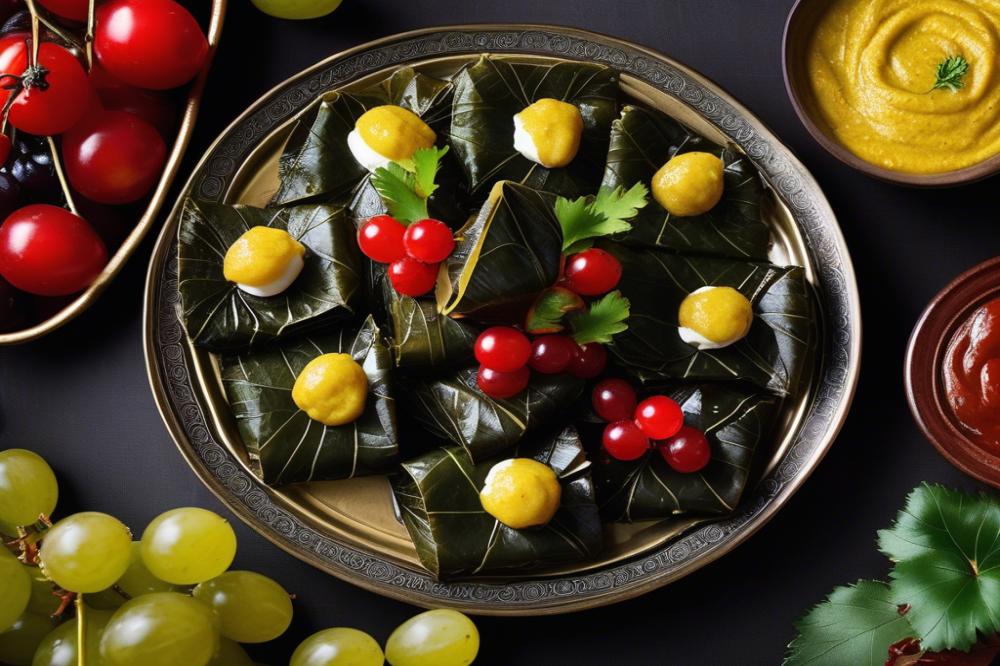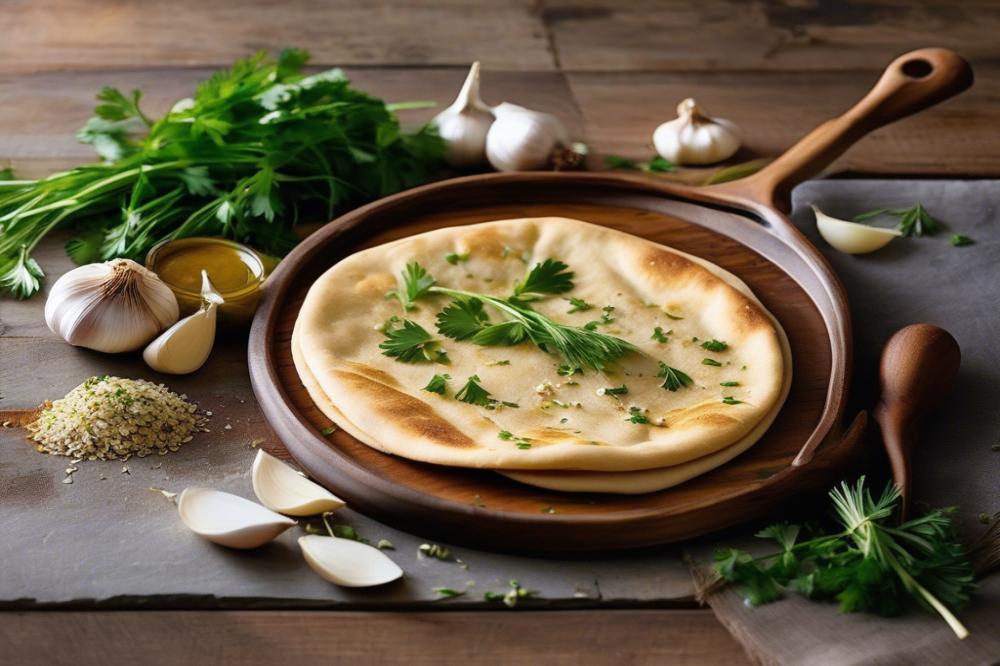Introduction
Lebanese cuisine is a vibrant tapestry woven from rich history and aromatic flavors. It reflects the country’s diverse culture and its Mediterranean roots. Food plays a significant role in bringing people together, often found at gatherings and celebrations. Each dish tells a story, and central to that narrative is the art of making stuffed grape leaves. This dish, known as Warak Enab, showcases the heart and soul of Lebanese cooking.
stuffed grape leaves are more than just a meal. They hold cultural significance that transcends their deliciousness. Families often pass down traditional recipes through generations. The process of preparing these vegetarian dishes can create cherished memories. From selecting fresh grape leaves to the final presentation, every step offers an opportunity to connect with loved ones. The layers of flavors in this delicacy represent the essence of Middle Eastern food, making it a favorite among many.
What makes Warak Enab appealing is not only its taste but also its versatility. This dish can be enjoyed as an appetizer, main course, or even as a healthy snack. The combination of rice, spices, and vegetables rolled in tender grape leaves provides a unique experience for anyone who savors it. Moreover, cooking tips for making these stuffed delights vary widely, allowing chefs to put their personal spin on the recipe. Traditional methods, along with creative variations, ensure that each plate reflects the cook’s individuality.
In summary, Lebanese stuffed grape leaves stand as a testament to the beauty of cultural dishes. They capture the spirit of sharing and celebration found in Lebanese cuisine. Preparing Warak Enab connects people with their heritage, inviting them to explore and embrace the richness of Mediterranean flavors.
Lebanese stuffed grape leaves: Ingredients and Cooking Instructions
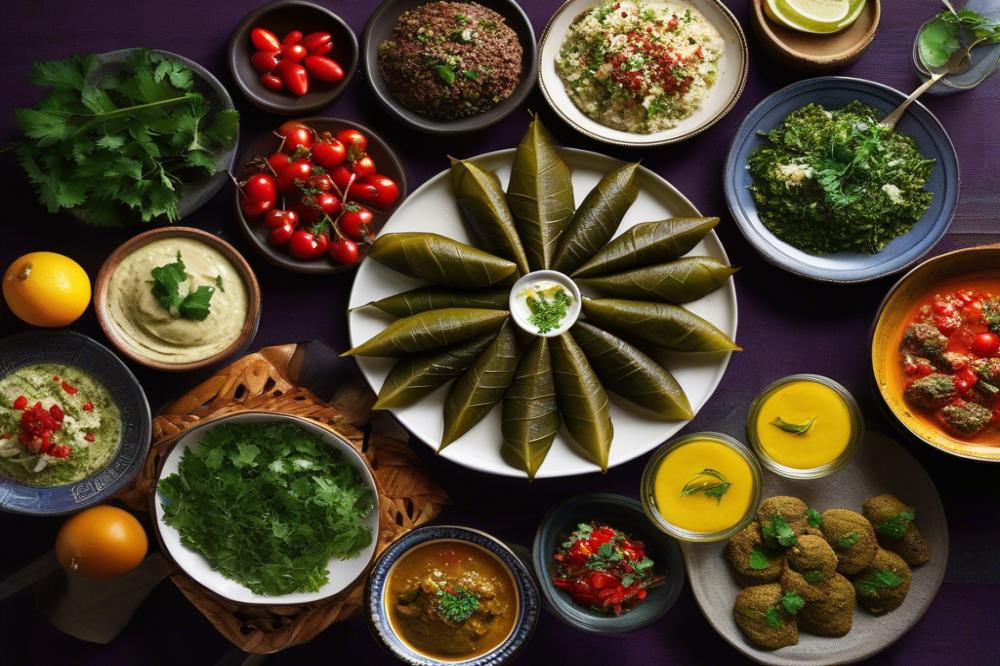
Ingredients List
- 1 jar of grape leaves (around 1 pound or 450 grams)
- 1 cup of short-grain rice
- 1 medium onion, finely chopped
- 1 cup of parsley, chopped
- 1 cup of fresh mint, chopped
- 1 medium tomato, diced
- ½ cup of pine nuts (optional)
- 1 teaspoon of salt
- ½ teaspoon of black pepper
- ½ teaspoon of allspice
- ½ cup of olive oil
- 2 lemons (juiced)
Step-by-Step Cooking Instructions
Preparation of Grape Leaves
Start by rinsing the grape leaves if they are packed in brine. The salt can be overwhelming, so this step is crucial. Then, immerse them in boiling water for a few minutes to soften. This will make the leaves more pliable and easier to roll. Spread the leaves out on a clean surface or plate to cool.
Mixing Ingredients for Stuffing
Combine rice, chopped onion, parsley, mint, and diced tomato in a mixing bowl. If using, add pine nuts to the mixture for a crunchy texture. Season with salt, black pepper, and allspice. Stir everything together well. This fragrant mixture captures the essence of Middle Eastern food.
Rolling Technique for Grape Leaves
To roll each grape leaf, place it with the stem end facing you. Put a small spoonful of the stuffing mixture at the base. Fold the sides over the filling, then roll it up tightly from the stem end to the tip. This technique keeps the filling intact during cooking. Practice makes perfect with this step.
Cooking in a Pot with Layers and Adding Water
Layer the rolled grape leaves in a large pot. Start with a layer of leftover grape leaves or sliced tomatoes to prevent sticking. Arrange the rolls tightly in a single layer. Drizzle olive oil and lemon juice over the top. Add enough water to cover the rolls completely. This moisture is essential for cooking the rice and infusing flavors. Cook on low heat for about an hour. Check occasionally to ensure the water hasn’t evaporated.
These stuffed grape leaves are a staple in Lebanese cuisine. They embody both tradition and the healthy aspects of Mediterranean food. Enjoy crafting this delicious dish and sharing it with friends and family!
Nutritional Information
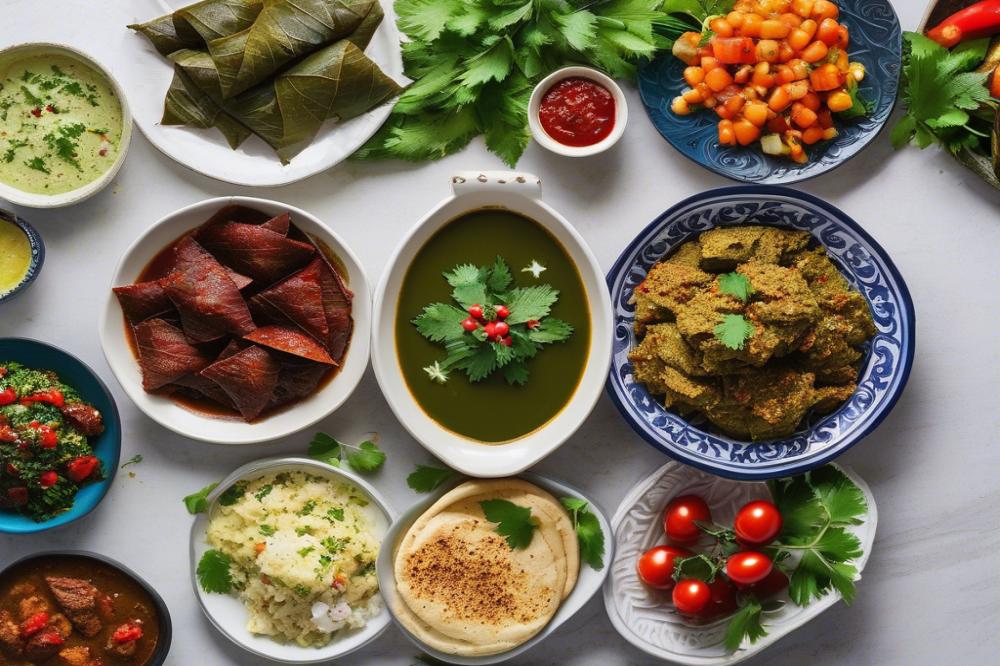
Stuffed grape leaves are a delightful dish found in Lebanese cuisine. Each ingredient contributes to the overall nutritional profile. Understanding these values is key to appreciating this culinary delight.
Breakdown of Nutritional Values
Grape leaves themselves are low in calories, containing about 14 calories per 100 grams. They are rich in fiber, which aids digestion. Rice, commonly used in the filling, provides carbohydrates. Brown rice offers even more nutrients than white rice, adding B vitamins and minerals.
Herbs such as parsley and mint pack essential vitamins. Parsley delivers vitamin C, K, and iron, while mint contains antioxidants. Adding tomatoes introduces lycopene, a powerful antioxidant linked to numerous health benefits. The olive oil used in cooking adds healthy fats, which are vital for heart health.
Caloric Content and Macronutrient Ratios
Total calories in a serving of stuffed grape leaves range from 150 to 250, depending on the proportion of rice and oil. Each serving includes a balance of carbohydrates, proteins, and fats. Carbs mainly come from the rice, while the herbs and olive oil contribute to fat content.
One portion commonly holds around 3-5 grams of protein. Though modest, this protein comes from the rice and any vegetables or pulses added. Additionally, the fiber content plays a significant role in moderating calorie absorption, enhancing overall health.
Health Benefits of Ingredients
Many ingredients in this traditional recipe promote good health. Olive oil supports heart health, reducing bad cholesterol levels. Fiber-rich rice combined with grape leaves helps maintain stable blood sugar levels. Furthermore, the vitamins and minerals present in herbs promote overall well-being.
Vitamins from grape leaves and herbs enhance immune function, while antioxidants contribute to lower inflammation. This combination makes stuffed grape leaves a smart choice for anyone seeking healthy recipes.
Importance in a Balanced Diet
Stuffed grape leaves fit well into a balanced diet. They represent Mediterranean food principles, focusing on fresh ingredients. As part of Middle Eastern food, they provide satisfying flavors without excessive calories.
Vegetarian dishes like this one offer a great way to enjoy various nutrients. The dish is often served as an appetizer or side, complementing main meals with their fresh taste. Cooking tips include opting for whole grains and fresh herbs to maximize health benefits.
Emphasizing these cultural dishes allows us to embrace a variety of flavors while nourishing our bodies. Stuffed grape leaves can be a delicious part of a healthy lifestyle.
Cooking Tips for Perfect Stuffed Grape Leaves
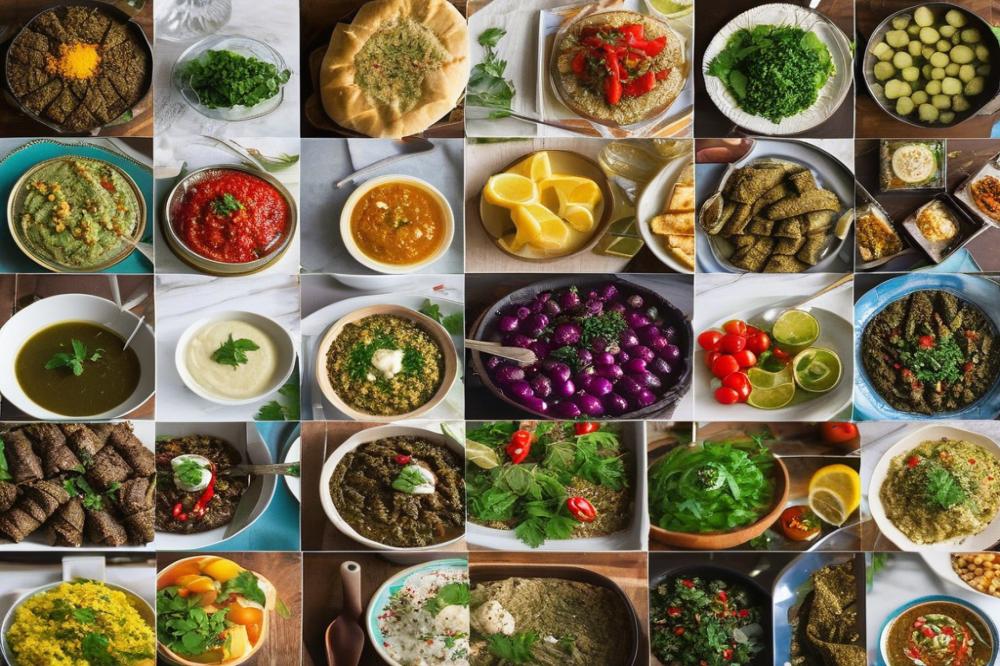
Best Practices for Selecting Grape Leaves
Choosing the right grape leaves can make a huge difference. Fresh grape leaves are usually best. Look for tender, vibrant green ones without any holes or browning. If fresh ones aren’t available, jarred leaves work too. Rinse them well to remove excess salt before use.
Variations in Stuffing Ingredients
Stuffing can vary greatly. A mixture of rice, ground meat, or lentils can all be delicious. Herbs such as parsley, mint, and dill add freshness. Consider adding spices like allspice or cinnamon for an extra kick. For lighter options, try vegetable stuffing or even quinoa, making it a healthy recipe choice.
Tips to Avoid Tearing the Leaves While Rolling
Rolling stuffed grape leaves can be tricky. Start with a gentle touch, as the leaves are delicate. Use your fingers to place the filling at the leaf’s base. Roll tightly but not too tightly; the filling expands while cooking. Fold in the sides before rolling to keep everything secure. This method helps prevent tearing.
Cooking Times and Methods for Optimal Taste
Cooking time can vary based on your method. Stovetop steaming often takes about 45 minutes. A slow cooker can be an easy alternative, taking a bit longer. Always use low heat to avoid burning the bottoms. Check for doneness by tasting one; the flavors should meld well together.
Suggestions for Serving and Pairing with Other Dishes
Serving can elevate the dish. A drizzle of lemon juice adds brightness. Consider pairing stuffed grape leaves with yogurt or a fresh salad. These Mediterranean food staples complement the flavors nicely. For a full meal, serve alongside grilled meats or other Middle Eastern food favorites. Enjoy with mint tea for a refreshing finish.
Cultural Significance of Warak Enab
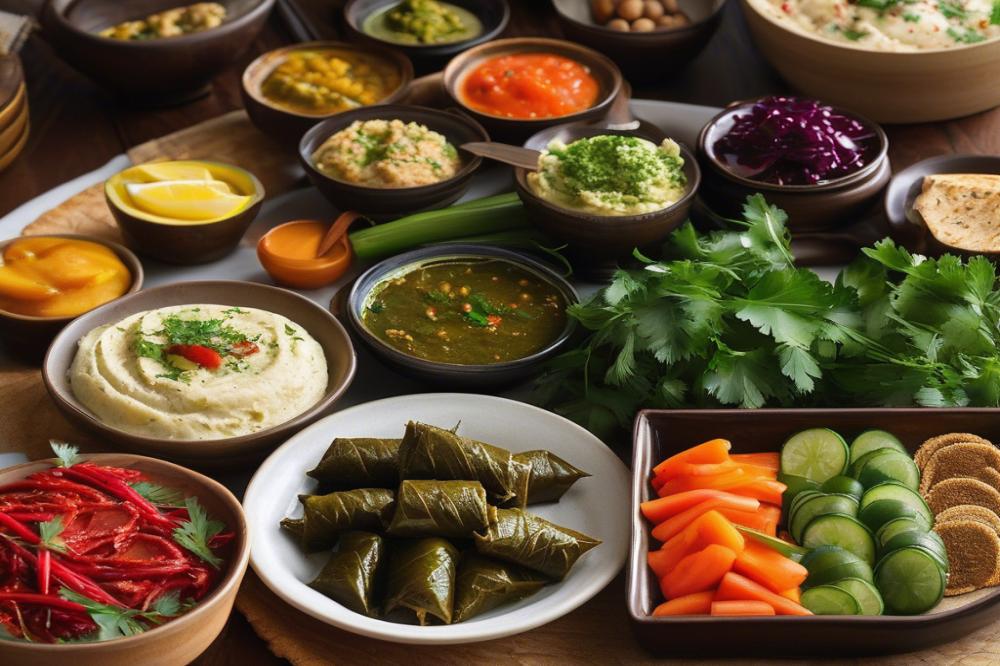
Stuffed grape leaves hold a special place in Lebanese celebrations. These delightful rolls often appear during weddings, holidays, and family gatherings. People see them as a symbol of hospitality and love. Preparing these dishes creates a sense of togetherness. Families gather in the kitchen to share stories while cooking traditional recipes.
Each household has its own way of making them. Some like them spicy, while others prefer a milder flavor. This variety reflects cultural preferences across Lebanon. When cooking stuffed grape leaves, many also incorporate seasonal ingredients. This practice connects people to the land and its bounty.
Lebanese cuisine represents a larger Mediterranean and Middle Eastern food culture. Many different countries share similar dishes. However, each region adds its unique twist to the recipes. Grape leaves serve as a canvas for these flavors. Vegetarian dishes like these showcase healthy recipes that anyone can enjoy.
As global food trends grow, Lebanese cuisine gains more attention. Chefs around the world experiment with these traditional dishes. They capture the essence of Mediterranean food and its vibrant flavors. Cooking tips for making stuffed grape leaves can be found in various cookbooks and online resources. Exploring these recipes can introduce new tastes and techniques to eager home cooks.
Sharing food creates bonds. The communal aspect of making stuffed grape leaves strengthens family ties. People exchange ideas and continue their culinary heritage. In every bite, there are stories of generations past and present. Thus, these cultural dishes become a vital part of everyday life in Lebanon.
Final Thoughts
Preparation of stuffed grape leaves can be an enjoyable journey. Gathering fresh ingredients, preparing a flavorful filling, and rolling each leaf requires patience and care. Each step is an opportunity to connect with the rich traditions of Lebanese cuisine. When you take that first bite, the blend of spices and tender leaves offers a comforting taste of home and heritage. Sharing this dish with family or friends makes the experience even more delightful. It sparks conversations and creates wonderful memories.
Everyone should consider trying their hand at this dish. Making them at home allows for creativity. You can adjust spices and fillings to suit your taste. Experimenting in the kitchen can be a rewarding adventure. Gather loved ones to help with the rolling. It’s a perfect way to bond over food preparation. Such moments turn cooking into a treasured activity rather than just a chore.
Preserving culinary heritage matters. Dishes like these reflect cultural stories and values. They connect generations through shared recipes and flavors. When families pass down these traditional foods, they keep history alive. Embracing such dishes helps us understand and appreciate diverse cultures.
For those eager to expand their culinary repertoire, many other recipes await. Explore more Lebanese and Mediterranean delights. From classic mezze to rich desserts, a whole world of flavors is out there. Each dish tells a story and brings people together. So why not dive into this wonderful cuisine and discover new favorites?

